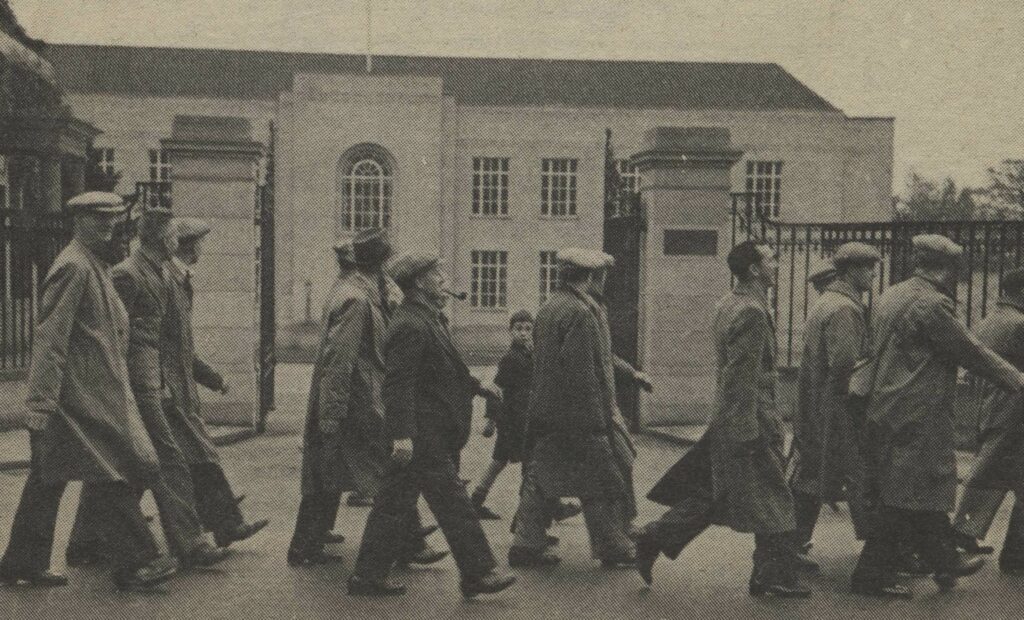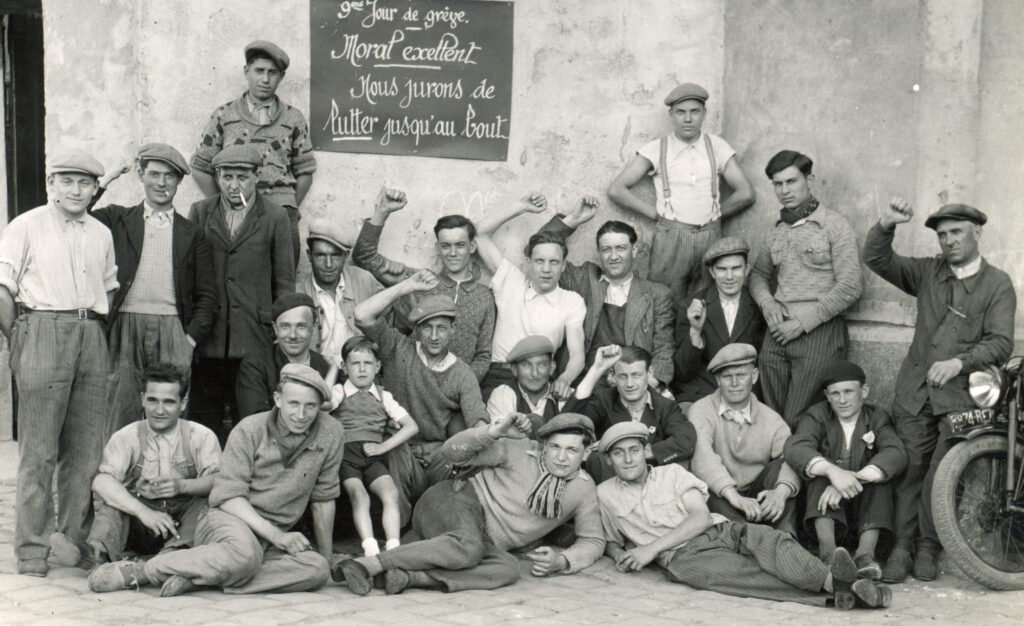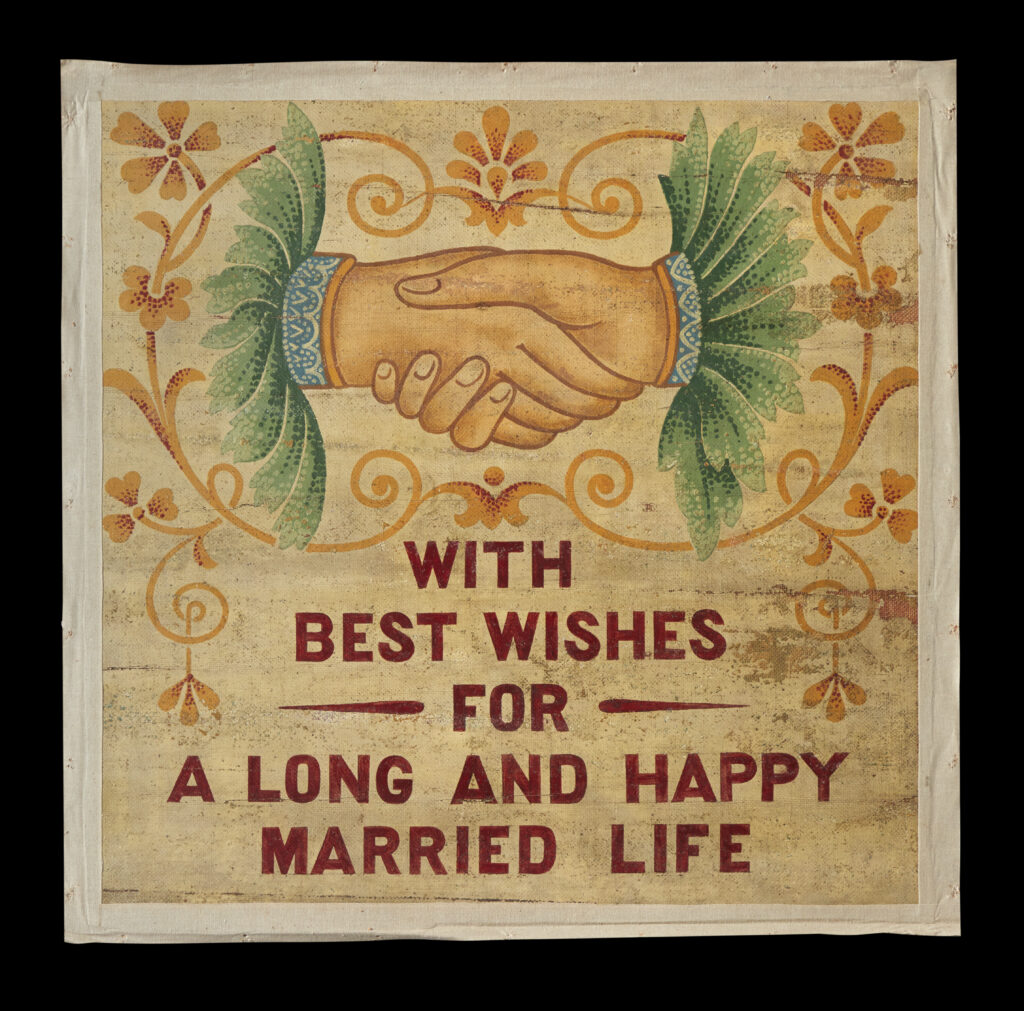To celebrate the acquisition of a rare Malcolm IV penny, the coronation of King Charles III, and Dunfermline’s new City status (granted on 20 May 2022), this blog gives a small glimpse into the fascinating history of early Scottish coins and the royal history of Dunfermline through OnFife museums’ coin collection.
The first Scottish king to issue coins was David I. In 1136, King David I took control of the city of Carlisle and the surrounding silver mines, and thus began to mint the first ever Scottish currency – a penny coin. At first, David’s coins imitated English ones (depicting the king’s bust, facing forward). His later coins took a different design, with the king’s bust facing sideways.
During his reign, David granted Dunfermline the status of a royal burgh and raised the status of the priory to an Abbey. He endowed it richly and brought stonemasons from Durham Cathedral to build it. David I is buried in Dunfermline Abbey Church. David I coins are very rare and there are no examples in our collection.
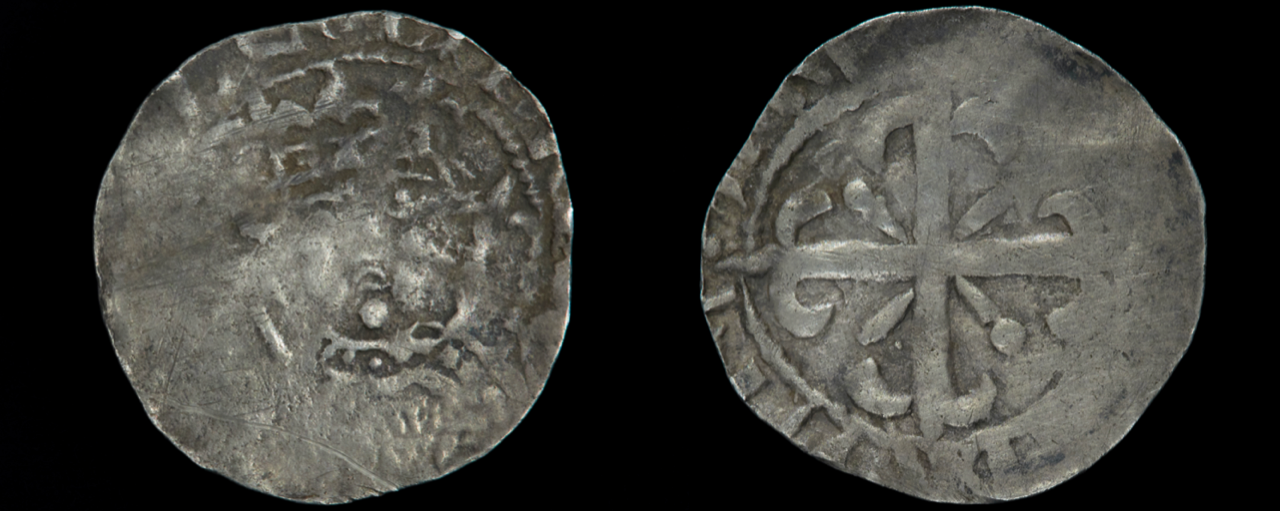
Image: Malcolm IV penny front and back (from around 1153-1165). Uncertain mint . FIFER:2023.1023 Acquired from the Treasure Trove Unit, 2023. Discovered by a metal detectorist in Aberdour area. Purchase of the coin has been made possible with the support of the Art Fund and National Fund for Acquisitions.
Malcolm IV (1141-1165), grandson of David I, was nicknamed ‘the Maiden’ because of his young age. Malcolm only reigned for 12 years and died at the age of 24. His pennies are therefore very rare.
The coin depicted above is the fifth single find recorded in Scotland. Unlike most other Scottish kings (up until the 1390s), Malcolm had this coin modelled in the style of English kings (depicting a front-facing portrait of the king, rather than a side-facing bust). Politically, Scotland was in a stronger position at the time than England – perhaps the design of the penny was chosen to reflect that?
Malcolm IV is buried in Dunfermline Abbey, just like his grandfather David I and his great-grandparents, Malcolm III and Queen Margaret.
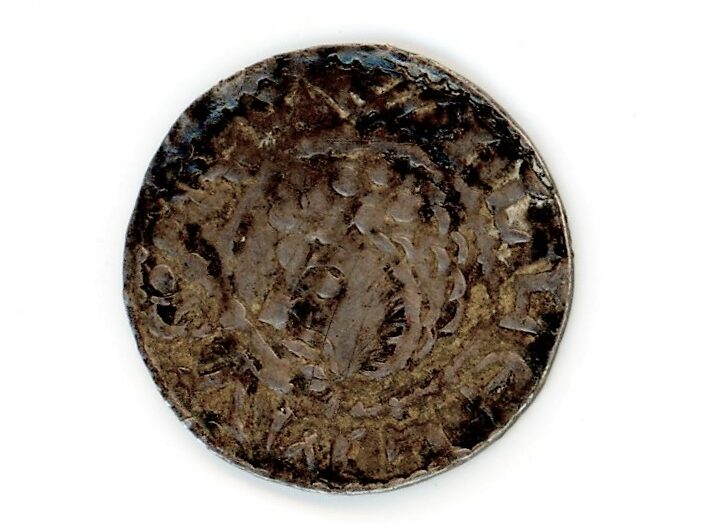
Image: William I penny (from around 1195-1205) . Minted by Walter of Perth . KIRMG:1980.0414
William I (c. 1142-1214) was Malcolm’s brother. It is thought that he was the first monarch to use the Lion Rampant (a red lion on a yellow background) as his Royal emblem, hence his nickname, The Lion. William I was the first Scottish king to produce silver pennies in a relatively large quantity. These coins were in use both in England and in Scotland.
William continued to favour Dunfermline Abbey during his reign although he is not buried there. Instead, he is buried in Arbroath Abbey which he founded in 1178.
William was succeeded by his son, Alexander II, but there are no examples of Alexander II coins in OnFife museums’ collection.
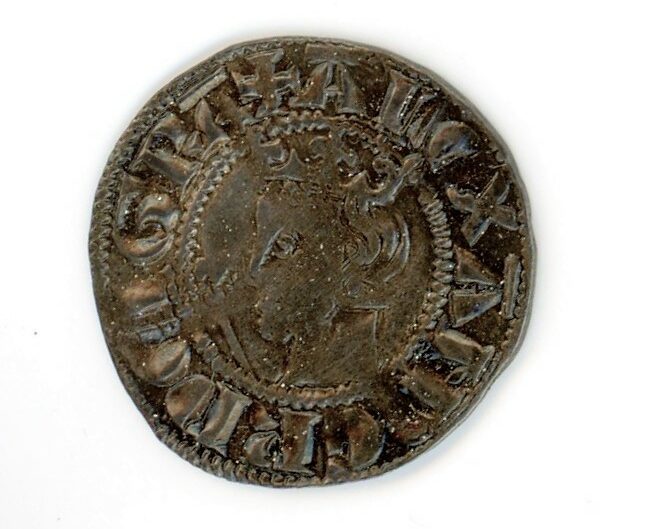
Image: Alexander III penny (from around 1280-1292) . Possibly minted in Berwick. KIRMG:1980.0364
Alexander III (1241-1286) second coinage does not bear the name of the moneyer and the mint. Instead, the legend REX SCOTORVM (Latin for ‘King of Scots’) was written on reverse. It is thought that fifty million coins were produced during this coinage. Scotland was prospering at the time and Scottish coins were accepted throughout Europe and are often found in hoards on the continent.
Alexander III visited Dunfermline Abbey in 1250 to see the remains of Queen Margaret. Alexander died in a fall from his horse while riding near Kinghorn, Fife on 19 March 1286. A monument commemorates the approximate location of his death on the edge of a rocky embankment. Similarly to many of his ancestors, Alexander III was also buried in Dunfermline Abbey.
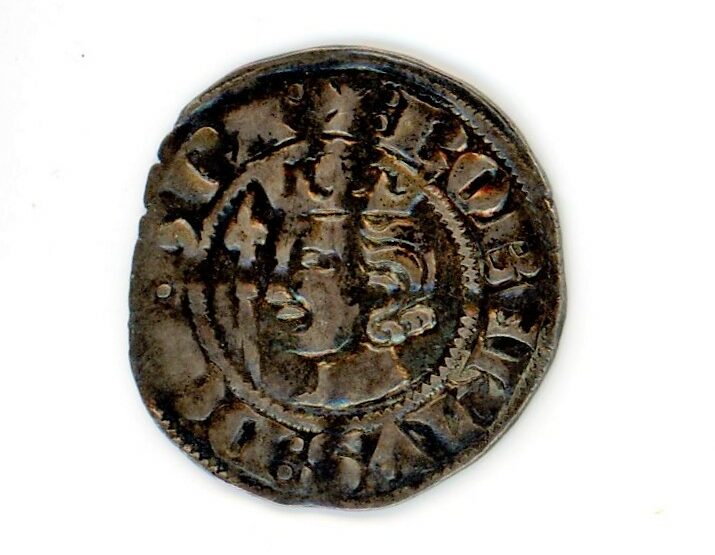
Image: Robert the Bruce penny (from around 1320-1329) . Uncertain mint. KIRMG: 1980.0413
Alexander III left no heirs, leading to a period of instability. In 1306, Robert I known as Robert the Bruce (1274-1329), great-grandson of David I, finally seized the throne and gradually begun to free Scotland from English rule. By the early 1320s, he had enough control (including of Berwick, one of the main mints at the time) to produce coins again in Scotland. All of Robert I coins are rare, reflecting the turbulent period of his reign.
After his death, Robert’s body was brought to Dunfermline from Cardross in possibly the largest funeral procession ever seen in Scotland. His mausoleum is in Dunfermline Abbey Church.
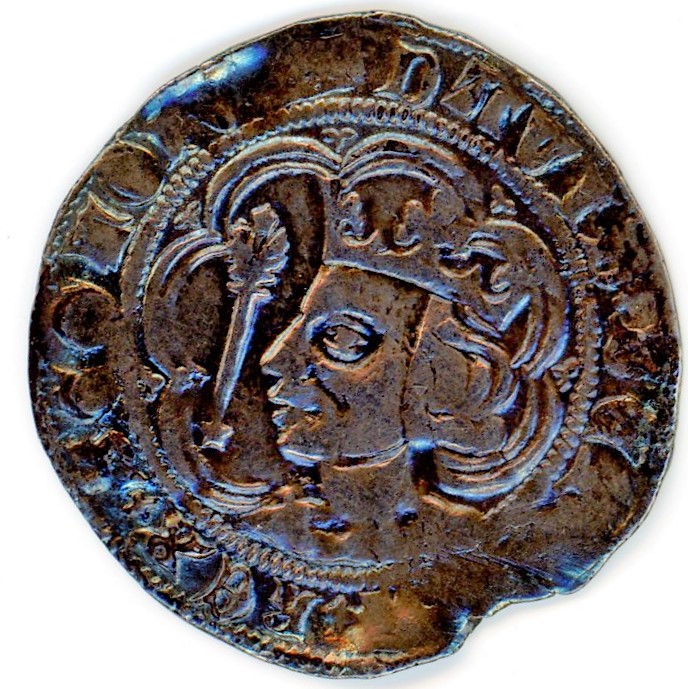
Image: David II groat (from around 1358-1367). Edinburgh mint. KIRMG: 1980.1801
King David II (1324-1371), son of Robert the Bruce, was born in Dunfermline Abbey. He spent most of his early reign in exile in France or in captivity in England. In 1357, a large ransom was agreed to be paid to England and David II was released. At first, David II was keen to demonstrate Scotland’s growing prosperity – this included introducing new currencies such as groat (fourpence, depicted above). Following the loss of Berwick to the English in 1333 it is thought that these coins were minted in Edinburgh.
However, due to the rising costs of gold and silver and economic difficulties (including struggles to back-pay his ransom), the weight of David II’s coins was reduced in 1367. This led to the gradual separation of the values of the currencies of England and Scotland.
David died very suddenly in Edinburgh and was buried in Holyrood Abbey. He left no children and was succeeded by Robert II (1316-1390), the son of David´s half-sister Marjorie Bruce, and her husband, Walter Stewart.
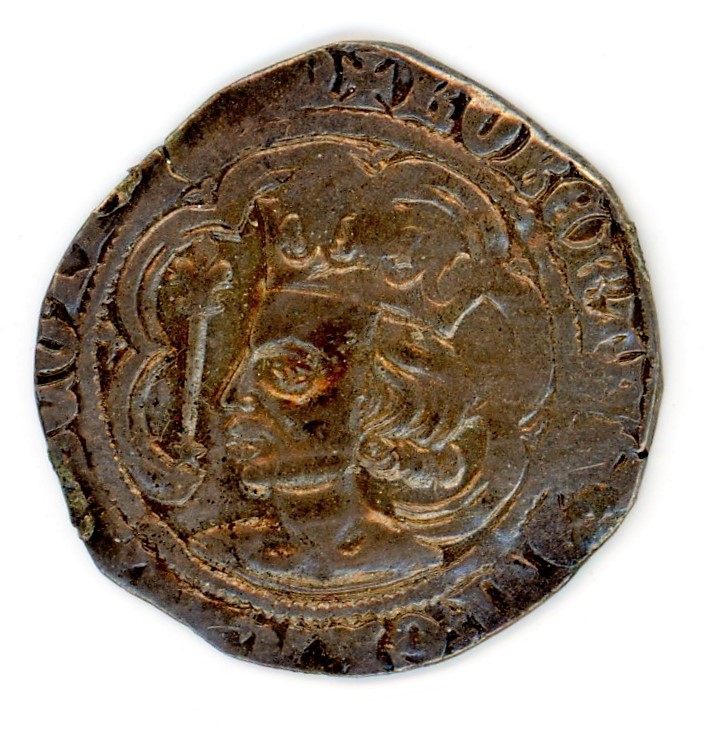
Image: Robert II groat (from around 1371-1390) . Edinburgh mint . KIRMG:1980.0417
Robert II, the first Scottish king of the Stewart line, was the grandson of Robert the Bruce. He acted as regent during part of the period of David II’s imprisonment and succeeded to the throne after David’s death. His coinage was kept at the same standard and style as that of David’s.
Robert held court in Dunfermline until 1389 when he retired to Dundonald Castle. He is buried at Scone Abbey.
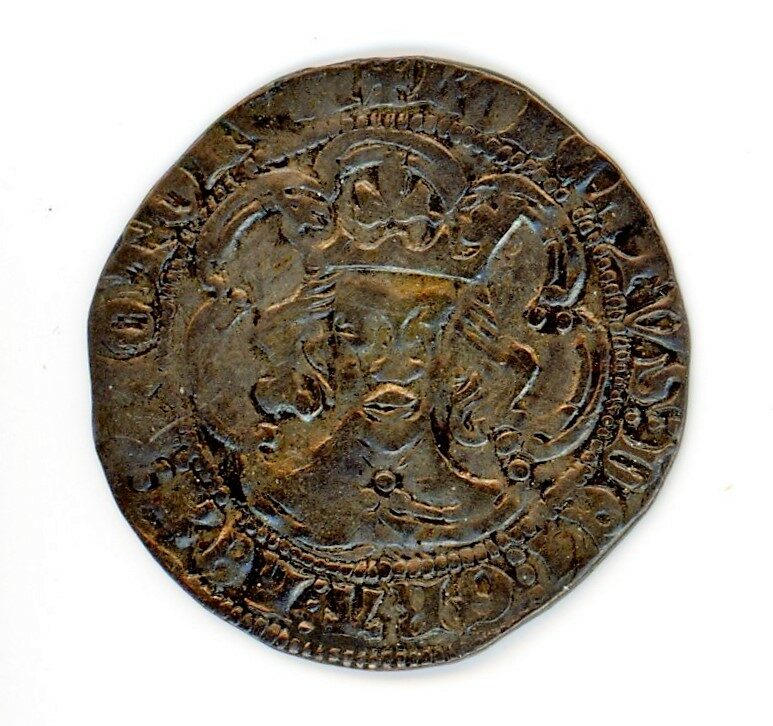
Image: Robert III groat (from around 1390-1403). Edinburgh mint. KIRMG:1980.3089
During Robert III reign, several new innovations to the coinage were introduced. First, the coins adopted the English style of the facing bust (as depicted above). Because of the rising cost of silver, his smaller denominations (the pence and halfpence) were minted in alloy known as billion. This led to his coins being outlawed in England in 1411.
Robert III (1337-1406) was the first Scottish monarch to use the image of St Andrew on his coins (on lion and demi-lion currencies). These coins are very rare and are not represented in our collection.
Robert III was buried at Paisley Abbey (which was founded by his family) but his wife, Annabella Drummond (c 1350-1401), was buried at Dunfermline Abbey.
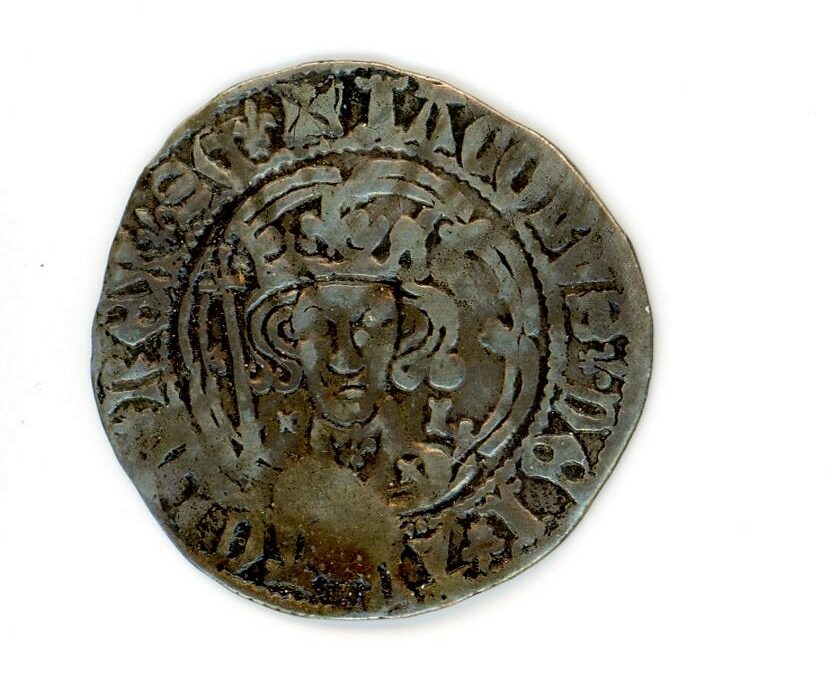
Image: James I groat (from around 1425-1437). Uncertain mint. KIRMG:1980.1794
James I was the youngest son of Robert III and was born in Dunfermline in 1394. He was imprisoned in England until 1424 and very few coins were minted until his return to Scotland. In an attempt to compensate for the rising price of silver and Scotland’s economic struggles, James I groat (depicted above) was revalued from fourpence to sixpence and its weight was slightly raised. This change reflects the political instability in Scotland at the time. James was assassinated at Perth in 1437 and was buried in Perth Charterhouse, a monastery which he had founded.
There are no examples of James II and James III coins in OnFife museums’ collection which is why their coinage is not mentioned here.
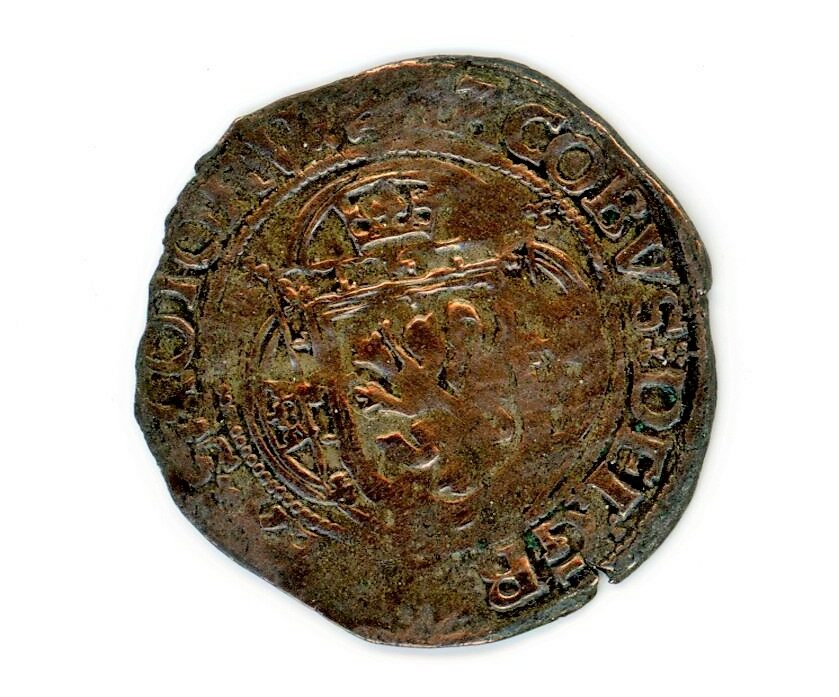
Image: James IV plack (from around 1496-1513). Edinburgh mint. KIRMG:1980.3232
James IV (1473-1513) continued to issue placks (fourpence, depicted above) and half placks (twopence) – new currencies introduced by his father, James III. James IV was the most successful of all the Stewart rulers of Scotland. During his 25-year reign, royal income doubled, the crown exercised firm control over the Scottish church and royal administration was extended to the Highlands and islands. James occasionally resided in Dunfermline and invested in improvements to Dunfermline Palace.
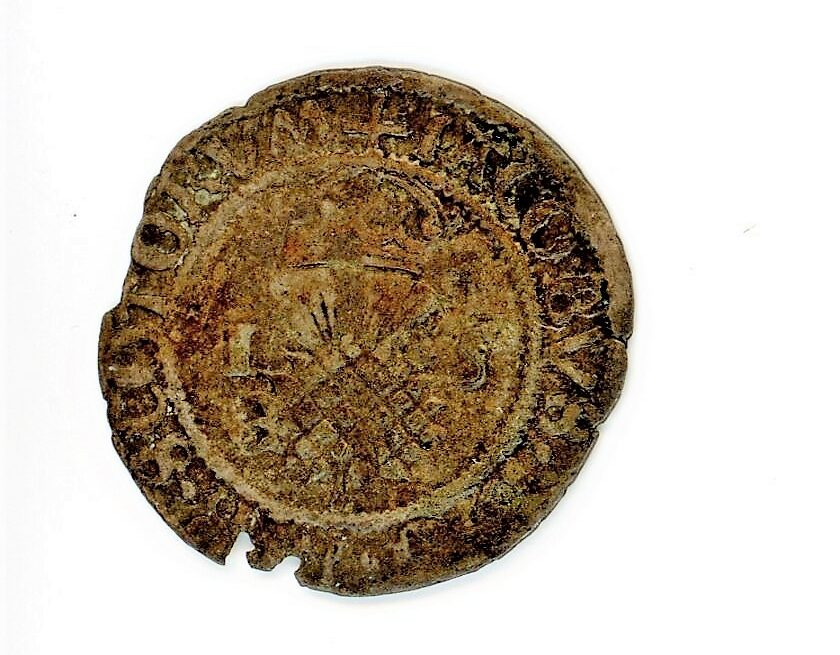
Image: James V bawbee (from around 1539-1542). Edinburgh mint. KIRMG:1980.3095
Bawbee (depicted above) was a coin valued at sixpence. It was introduced by King James V (1512-1542) and remained in use until the 1700s. The name of the coin comes from the name of James V’s mint-master’s estate, Sillebawby, a farm in Burntisland in Fife.
A carved stone bearing the arms of James V can still be seen in the Dunfermline Abbey museum. It is thought to have decorated his royal apartment in Dunfermline. One of his favourite residencies in Scotland was Falkland Palace in Fife, however. This is also where he died, aged thirty.
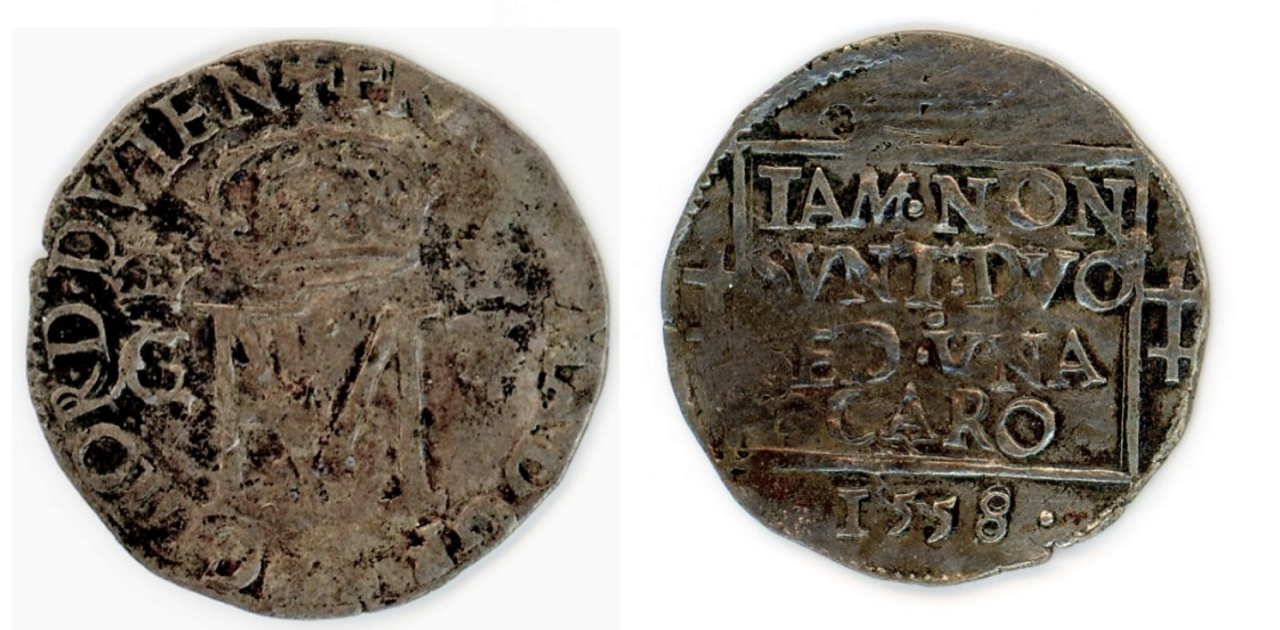
Image: Mary’s nonsunt, front and back (1558) . Unknown mint. KIRMG:1980.1805
Mary Queen of Scots (1542-1587) coinage gives a colourful overview of her reign – the design of her coins changed during various regencies, marriages, wars with England and the alliance with France. New denominations were also introduced, including a twelve penny groat or ‘Nonsunt’. The name ‘Nonsunt’ comes from the Biblical inscription in Latin on the reverse of the coin: Iam non sunt duo sed una caro (They are no longer two but one flesh). The coin depicted above was issued when Mary married Francis II of France. Their monogram can be seen on front of the coin.
Mary visited Dunfermline several times but had no close ties with the royal burgh.

Image: James VI 12 shillings, front and back (from around 1603-1625). Unknown mint . KIRMG:1980.1824. On the reverse of the coin, the arms of England (and France) are in the first and fourth quarter, the rampant lion of Scotland in the second quarter, and the harp of Ireland in the third.
After Mary’s son, King James VI of Scotland (1566-1625) became King James I of England in 1603, Scotland started to use the same coinage standard as England again. The coin depicted above, was produced after his accession to the English throne and is inscribed “James by the Grace of God, King of Great Britain, France, Ireland” (in Latin).
James and his wife Anne greatly invested in the development of Dunfermline Palace in the 1580s, but royal interest in Dunfermline waned when James and Anne left for London in 1603, and the palace fell into disrepair.

Image: James VI gold unit (from around 1637-1642). Nicholas Briot coinage, Edinburgh. KIRMG:1980.3354
James VI’s son Charles I was born at Dunfermline Palace in 1600. He was the last king to be born in Scotland. Charles was crowned in 1626 in Westminster Abbey but at the insistence of the Scots, his Scottish coronation took place separately, in 1633, in Edinburgh. After the ceremony, the king toured Linlithgow, Stirling, Dunfermline, and Falkland palaces.
In 1636, Charles I made Nicholas Briot (who was the Chief Engraver to the Royal Mint), master of the Scottish Mint in Edinburgh. Briot replaced Scotland’s gold and silver hammered coinage with machine made milled coinage which is why this coin has a more circular shape.
Charles believed that the king had a divine right to rule. This is also reflected in his coinage which bears a Latin inscription, “I am set over them, that I may be profitable to them.” Charles subjects had different views, however, and the King was executed in 1649.
Scotland still produced its own native coinage until the Acts of Union in 1707, but Dunfermline’s royal status was lost with the death of the last Dunfermline-born king.
_____________________
All coins mentioned in this article are on display at Dunfermline Carnegie Library and Galleries 6 May – 2 July 2023. OnFife coin collection at Bankhead Collections Centre, Glenrothes can be seen by appointment. To make a booking, please contact us at museums.enquiries@onfife.com.


